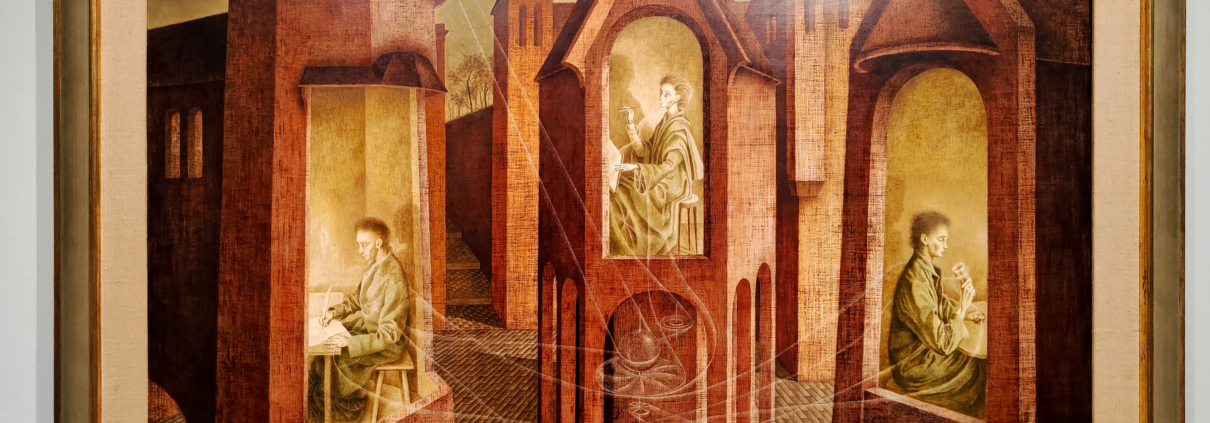SURREALISM METAPHOR FOR CHANGE
From the curatorship of Gražina Subelytė in collaboration with the Barberini Museum in Potsdam comes the exhibition of Peggy Guggenheim in Venice entitled: Surrealism and magic. Enchanted modernity.
A unique exhibition, as it is specific on the “rediscovery” of Surrealism in a historical moment, such as the one in which we live, where the analogies to the wars we live in and the help of the worlds through the metaverse make reality appear to us as never before surreal.
As the curator underlines “in an era of unprecedented global conflict, the Surrealists devote themselves to magic and the occult above all as metaphors of change, they use them as symbolic narratives with which to configure their trust in a period of recovery after war”. The Surrealists investigate what lies beneath the surface of the apparent world to delve into themes such as alchemy, dreams and irrationality.
With the rise of Nazism, the Surrealists felt an urgent need for social, political and spiritual renewal to counter the impending new reality. They therefore rely on what until then had never been explored and brought to light as a means of hope to believe in a drastic change in humanity. In this way all the themes treated by the artists become a reason for hope and a source of inspiration for the movement itself.
It can be said that surrealism has the will to express a superior reality formed by an irrational part and a dream part, to reveal the deepest aspects of the psyche. The poet André Breton, who was one of the first spokesmen of the avant-garde was influenced by reading Freud’s “The Interpretation of Dreams” in 1900; after reading it he came to the conclusion that it was unacceptable that the dream and the unconscious are parts of little importance in a modern civilization and therefore thought of founding a new artistic and literary movement in which they had a fundamental role. Thus surrealism was born, with a first manifesto of 1924 written by himself, and a second in 1929 where he explored the themes of occultism.
In the years marked by the world war, the Surrealists devoted themselves to magic and the occult as symbols of healing, as a symbolic language through which to reconfigure the hope of a better post-war world. While many works from the 1940s evoke a sense of existential angst or dread, their overall attitude, based on the hope of regeneration, remains resolutely optimistic. In the exhibition Surrealism is retraced during and after the Second World War, giving space to the different interpretations of each artist on the theme.
From a chronological point of view, the exhibition ranges from Giorgio de Chirico’s metaphysical painting, dated around 1915, to Max Ernst’s iconic painting The Dressing of the Bride, from 1940, to the occult imagery of the latest works by Leonora Carrington and Remedios Varo. From a content point of view, some protagonists stand out as scholars of specific topics, in particular:
Max Ernst brings theories of correspondences to his canvases, shares a predilection for randomness, automatism and oneirism and above all a taste for senseless and illogical, yet beautiful combinations. In front of his paintings, one has the duty to abandon oneself to its labyrinthine branches, letting oneself be enchanted by its enigmas and visual and symbolic tangles. He himself will reveal “The more the combination of elements is unexpected, the more the spark of poetry that springs from it is full of amazement”.
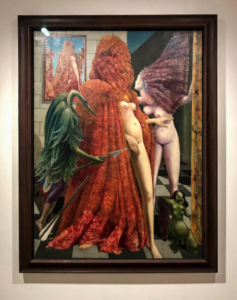
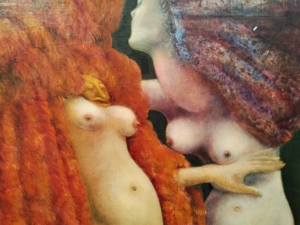
Kurt Selington Swiss artist will focus on alchemy and esotericism, tarot and magic by writing a book in 1948 “The mirror of magic” very influential for the whole movement. He wanted to explore all dimensions, be they unconscious or genuinely preternatural or supernatural, that go beyond what rationalism or everyday life can offer.
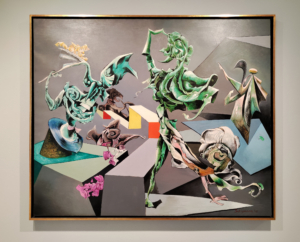
Leonora Carrington. Leonora Fini and Dorothea Tanning, are the three main women in surrealism and willingly accept the operation of expressing the vision of the woman in a new way. The women of this artistic current reject the idea of the accessory and passive female, but on the contrary she becomes an active character in mythology and magic. Under the guise typical of the classical academy, women are lethal, chaotic, erotic, magical and are interpreted as witches, enchantresses, chimeras and fairies.
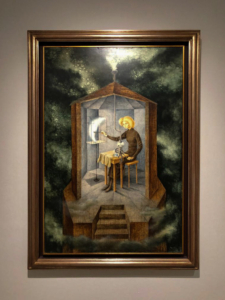
Victor Brauner, will appreciate the themes of magic and tarot. Between the clarity of the images and the lack of any connection between their components, he has managed to create images that are difficult to understand but as hypnotic as they are disturbing. Known for his explorations of spiritualism, he was an active member of the Surrealist painters until 1948.
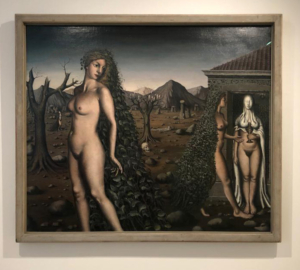
The exhibition presents a total of about sixty works by about twenty very relevant artists including Salvador Dalí, Giorgio de Chirico, Paul Delvaux, Maya Deren, René Magritte, Maria Martins, Roberto Matta, Wolfgang Paalen, Kay Sage, Yves Tanguy and Remedios I launch.
Among the major institutions from which the works come are: Center Pompidou, Paris, Moderna Museet, Stockholm, Israel Museum, Jerusalem, The Menil Collection, Houston, Museo Nacional Centro de Arte Reina Sofia, Madrid, Museum of Modern Art, The Metropolitan Museum of Art, Solomon R. Guggenheim Museum and Whitney Museum of American Art, New York, Museo de Arte Moderno, Mexico City, Castello di Rivoli Museum of Contemporary Art in Rivoli-Turin
Erika Gaburro

